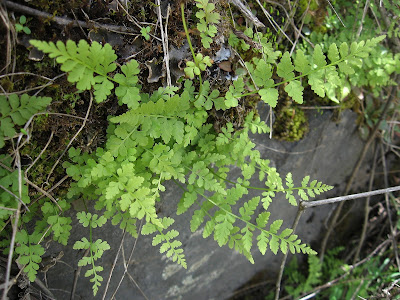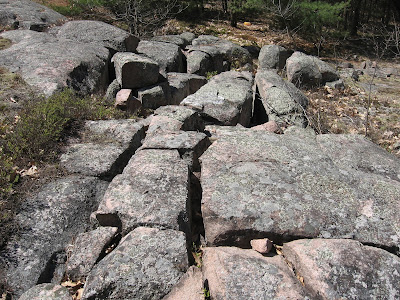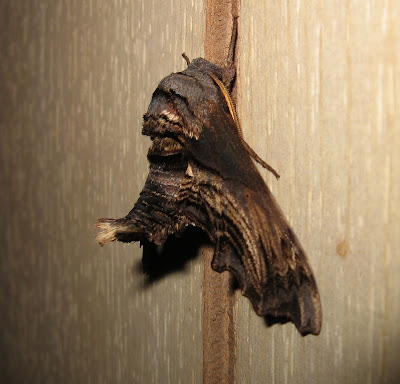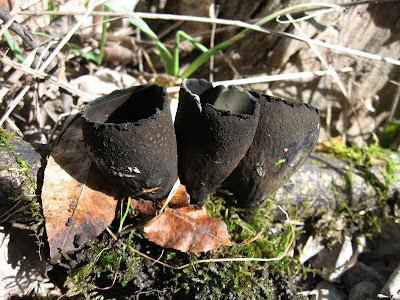Callophrys gryneus gryneus, the eastern subspecies of the Juniper Hairstreak, is considered to be rare, but if you search in the proper habitat and on the right host plant – Eastern Red Cedar – during its flight season from late May until June, you just might be lucky enough to stumble across this elusive little butterfly.
Tuesday, May 21, 2013
The Hunt for the Juniper Hairstreak
Hudsonian Whiteface (Leucorrhinia hudsonica)
Two or three pairs of eyes are better than one, and it's fortunate that I had a friend along on this particular nature photography hike, else I would have completely overlooked this small odonate. When he said there was a red dragonfly sitting along the trail I was somewhat skeptical ... in a couple more months the meadowhawks will be flying, but a red dragonfly this early in the year?
Slender Fragile Fern
It's one of nature's ironies that sometimes the seemingly delicate and fragile living things inhabit the most challenging, inhospitable environments. Yet the Slender Fragile Fern (Cystopteris tenuis), also known as Mackay's Brittle Fern, clings to shaded areas on rock faces where one would think it difficult for a plant to survive, let alone flourish.
Friday, May 10, 2013
Ontario's One and Only Lizard
These are images that I never dreamed I would capture, for two reasons. One is that the Common Five-lined Skink is wary and moves like greased lightning. Sneaking up close to this small lizard with a Canon PowerShot A530 is virtually impossible, imagine trying to approach within one foot of a bird! The few photos below are the result of over twenty hours of patiently waiting in the hot sun, hoping the skink would become accustomed to my prescence and come out to bask.
An Abbott's Sphinx, a Grapevine Epimenis and a Luna Moth
You know it's going to be a good day when there's a cool moth you've never seen before hanging out on the wall outside your door. Like many moths the profile and cryptic coloration of the Abbott's Sphinx (Sphecodina abbottii) make it resemble a piece of bark.
Springtime 'Shrooms
As a rule late summer and autumn are the optimal seasons to go hunting for fungi, but some species produce their fruitbodies in spring and summer. Discovered by a friend along the edge of a swamp bordering Lost Channel Road in early May, this distinctive fungus also has a rather unusual name – Devil's Urn. One has to wonder about the history or derivation of certain fungus names ... Toadstool, Dead Man's Fingers, Witches' Butter ... at least the binomial or Latin name of this Ascomycete (the group that also includes cup fungi, saddles, morels, et al), Urnula craterium, is scrutable.
Thursday, May 9, 2013
"March winds and April showers ..."
This year the late winter and early spring temperatures were closer to the seasonal norms, and as a result many of the first wildflowers are blooming three weeks behind compared to the spring of 2012 with its early arrival of mild weather. However, the warm spell of the past week or so did indeed bring forth May's flowers and everything seems to be bursting into bloom all at once.































































